Which iPad Is Right for You?
The TL;DR (30 Second Version)….
Here’s our quick breakdown of Apple’s current iPad lineup, which models we recommend for who, and a quick explainer why…
- ✅ Best Overall iPad (For Most Users) → iPad Air (6th Gen) – A perfect balance of power, price, and features. Great for students, professionals, and casual users alike.
- 💰 Best Budget iPad → iPad (10th Gen) – If you just need a reliable tablet for web browsing, streaming, and light productivity, this is the best value.
- 🎨 Best iPad for Artists & Pros → iPad Pro (M4) – The most powerful iPad with a stunning display and Apple Pencil Pro support, ideal for creatives and professionals.
- ✈️ Best Compact iPad → iPad Mini (7th Gen) – If portability is your top priority, the iPad Mini is small, lightweight, and powerful enough for most tasks.
- 💼 Best iPad for Productivity → iPad Pro (M4) – With Magic Keyboard support, Face ID, and a laptop-level M4 chip, this is the best choice if you want an iPad that can replace a computer.
Need more details and nuance? Read on because there’s about 5000+ words of detail below!
- Which iPad Is Right for You?
- Apple’s Current iPad Lineup (2025)
- iPad Chipsets and Performance Metrics
- Choosing An iPad For Your Exact Needs
- Key Factors to Consider When Buying an iPad in 2025
- Final Thoughts: Which iPad Should You Buy?
- Best iPad Alternatives in 2025
Apple’s 2025 iPad lineup has something for everyone—whether you’re a student taking notes, a creative professional editing on the go, or just want a tablet for streaming and browsing.
But with so many options and configurations available, picking the right one can almost feel like a chore.
I basically aimed to cover everything, so if you’re coming in completely unaware of what’s going on with iPad in 2025, by the end you’ll know more than 99.9% of other humans!
This guide breaks down each iPad, what it’s best for, and how to choose the one that fits your needs (and budget).
Let’s dive in, starting with Apple’s current 2025 lineup so you now what you’re options are…
Apple’s Current iPad Lineup (2025)
| 📱 iPad Model | ⚡ Chip | 🖥️ Display | 💾 Storage | 🎯 Ideal For |
|---|---|---|---|---|
| iPad Pro (7th Gen) | M4 | 11″/12.9″ XDR (120Hz) | 128GB–2TB | 🎨 Creators, professionals |
| iPad Air (6th Gen) | M2 | 11″/13″ Liquid Retina | 128GB–1TB | 📚 Students, casual users |
| iPad Mini (7th Gen) | A17 Pro | 8.3″ Liquid Retina | 128GB–512GB | 📖 Portability, reading |
| iPad (10th Gen) | A14 Bionic | 10.9″ Liquid Retina | 64GB–256GB | 👦 Budget buyers, kids |
On mobile? Switch to landscape mode to view table more clearly
Apple’s 2025 iPad lineup includes four main models, each aimed at different demographic or type of user.
Whether you need a powerful Pro model for work, a versatile Air for everyday use, a compact Mini for portability, or a budget-friendly iPad for basic tasks, Apple’s done its best to make sure all the main bases are covered.
Remember when there was just ONE iPad? The iPad. Simpler times…
Here’s how Apple’s 2025 iPad lineup breaks down…
📌 iPad Pro (7th Generation) – Best for Professionals & Power Users
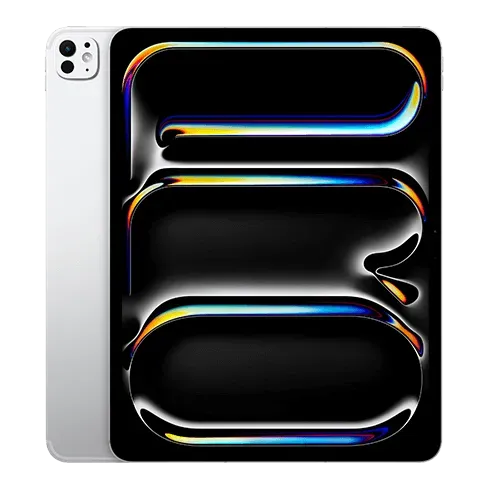
💻 Chip: M4 (fastest iPad processor)
📺 Display: 11-inch & 12.9-inch Liquid Retina XDR (mini-LED, 120Hz ProMotion)
💾 Storage: 128GB – 2TB
✏️ Apple Pencil Pro Support: Yes
⌨️ Magic Keyboard Support: Yes
🎯 Ideal For: Creators, designers, video editors, musicians, power users
💰 Price Range: $$$$$
📌 iPad Air (6th Generation) – Best for Students & Everyday Users

💻 Chip: M2
📺 Display: 11-inch & 13-inch Liquid Retina (60Hz refresh rate)
💾 Storage: 128GB – 1TB
✏️ Apple Pencil Pro Support: Yes
⌨️ Magic Keyboard Support: Yes
🎯 Ideal For: Students, light creative work, professionals who want a laptop alternative
💰 Price Range: $$$
📌 iPad Mini (7th Generation) – Best for Portability
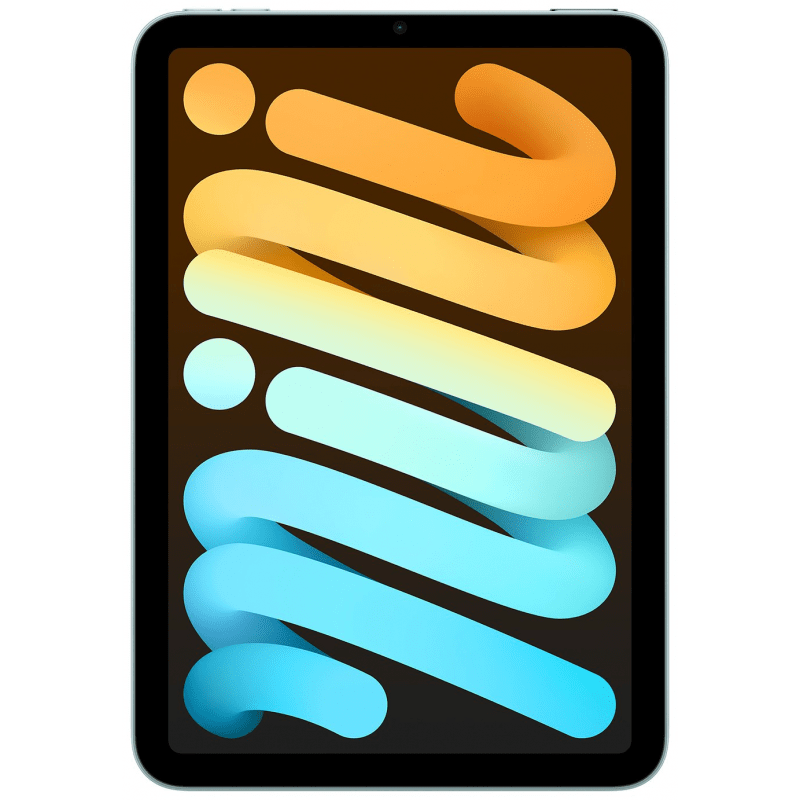
💻 Chip: A17 Pro
📺 Display: 8.3-inch Liquid Retina (60Hz refresh rate)
💾 Storage: 128GB – 512GB
✏️ Apple Pencil (1st Gen) Support: Yes
🎯 Ideal For: Travelers, note-taking, reading, gaming
💰 Price Range: $$$
📌 iPad (10th Generation) – Best for Budget Buyers
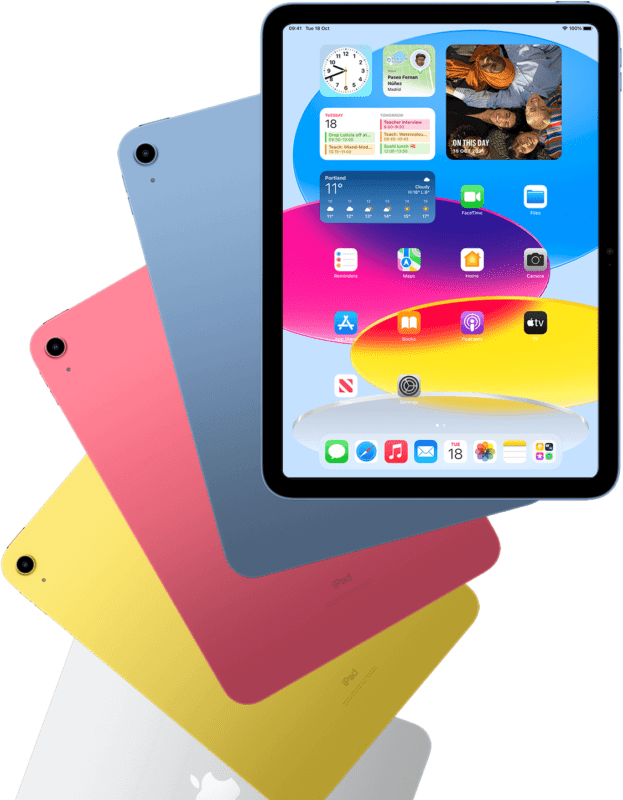
💻 Chip: A14 Bionic
📺 Display: 10.9-inch Liquid Retina (60Hz refresh rate)
💾 Storage: 64GB – 256GB
✏️ Apple Pencil (1st Gen) Support: Yes
⌨️ Magic Keyboard Folio Support: Yes
🎯 Ideal For: Casual users, kids, basic productivity
💰 Price Range: $$
iPad Chipsets and Performance Metrics
| 📱 iPad Model | ⚡ Single-Core | 💪 Multi-Core | 🔍 Performance Insights |
|---|---|---|---|
| iPad Pro (7th Gen, M4) | 3,695–3,767 | 14,550–14,677 | 🚀 Up to 46% faster single-core and 55% faster multi-core vs. M2. |
| iPad Air (6th Gen, M2) | 2,540–2,651 | 9,360–10,066 | 💻 Comparable to entry-level MacBooks, great for most tasks. |
| iPad Mini (7th Gen, A17 Pro) | 2,710–2,840 | 6,274–6,982 | 📈 Binned A17 Pro with a 5-core GPU, major upgrade over its predecessor. |
| iPad (10th Gen, A14 Bionic) | ~1,580 | ~4,400 | 🎮 Handles casual tasks and light gaming but lags in raw power. |
On mobile? Switch to landscape mode to view table more clearly
What the hell do all these numbers mean? Here’s a simplified breakdown of how benchmark performance (the stats come via GeekBench FYI) translates into real-world usage.
🚀 iPad Pro (7th Gen, M4) – The Ultimate Performance King
- Single-Core: 3,695–3,767
- Multi-Core: 14,550–14,677
- Why It Matters: The M4 chip is insanely fast, delivering up to 46% faster single-core performance and 55% faster multi-core speeds compared to the M2.
This puts it way ahead of every other iPad and even some MacBooks. If you’re doing 4K video editing, 3D rendering, or running pro apps like Logic or Final Cut, this is the only iPad that makes sense.
🏆 Best For: Professionals, content creators, heavy multitaskers, and anyone who wants the absolute best iPad Apple has ever made.
💻 iPad Air (6th Gen, M2) – The Sweet Spot for Most People
- Single-Core: 2,540–2,651
- Multi-Core: 9,360–10,066
- Why It Matters: The M2 is still a killer chip, putting the iPad Air’s performance on par with entry-level MacBooks.
It can handle photo editing, gaming, and multitasking with ease, but it’s a step below the M4 in terms of sheer speed.
💡 Think of it like this: If you don’t need extreme pro-level power but want something that feels fast and future-proof, the iPad Air is the best value in the lineup.
🏆 Best For: Students, casual creatives, and users who want a powerful iPad without the Pro price tag.
📈 iPad Mini (7th Gen, A17 Pro) – Pocket-Sized Powerhouse
- Single-Core: 2,710–2,840
- Multi-Core: 6,274–6,982
- Why It Matters: The A17 Pro is Apple’s latest iPhone chip, binned to have a 5-core GPU instead of 6.
This means it’s still super fast, but slightly underclocked. It crushes its predecessor and is great for gaming, thanks to hardware-accelerated ray tracing.
💡 If you love a compact iPad that can still run intensive apps and games, this is the one to get. It won’t match M-series chips for heavy multitasking, but for on-the-go performance, it’s unbeatable.
🏆 Best For: Gamers, frequent travelers, and those who prefer a smaller but still powerful tablet.
🎮 iPad (10th Gen, A14 Bionic) – The Entry-Level Option
- Single-Core: ~1,580
- Multi-Core: ~4,400
- Why It Matters: The A14 is several generations old, but it’s still fine for casual users.
You can browse, stream, and do light gaming, but anything beyond that—like heavy multitasking or pro apps—will feel slow compared to the newer chips.
💡 If you’re just looking for a basic iPad for entertainment, schoolwork, or everyday browsing, this is a solid choice—but if you want something more powerful, the iPad Air is worth the extra money.
🏆 Best For: Basic users, kids, and anyone who just needs a no-frills iPad for light tasks.
Key Takeaways
- Want the absolute best performance? → iPad Pro (M4) 💨
- Want great power at a reasonable price? → iPad Air (M2) ⚡
- Want a compact but powerful tablet? → iPad Mini (A17 Pro) 📱
- Just need a simple iPad for everyday tasks? → iPad (10th Gen, A14) 🎮
Bottom Line: If you’re doing pro-level work, the M4 iPad Pro is a no-brainer.
The M2 iPad Air is the best choice for most people, while the iPad Mini is a great pick for portable power.
The A14 iPad is fine for basic use, but if you want long-term performance, go for at least the Air.
Choosing An iPad For Your Exact Needs
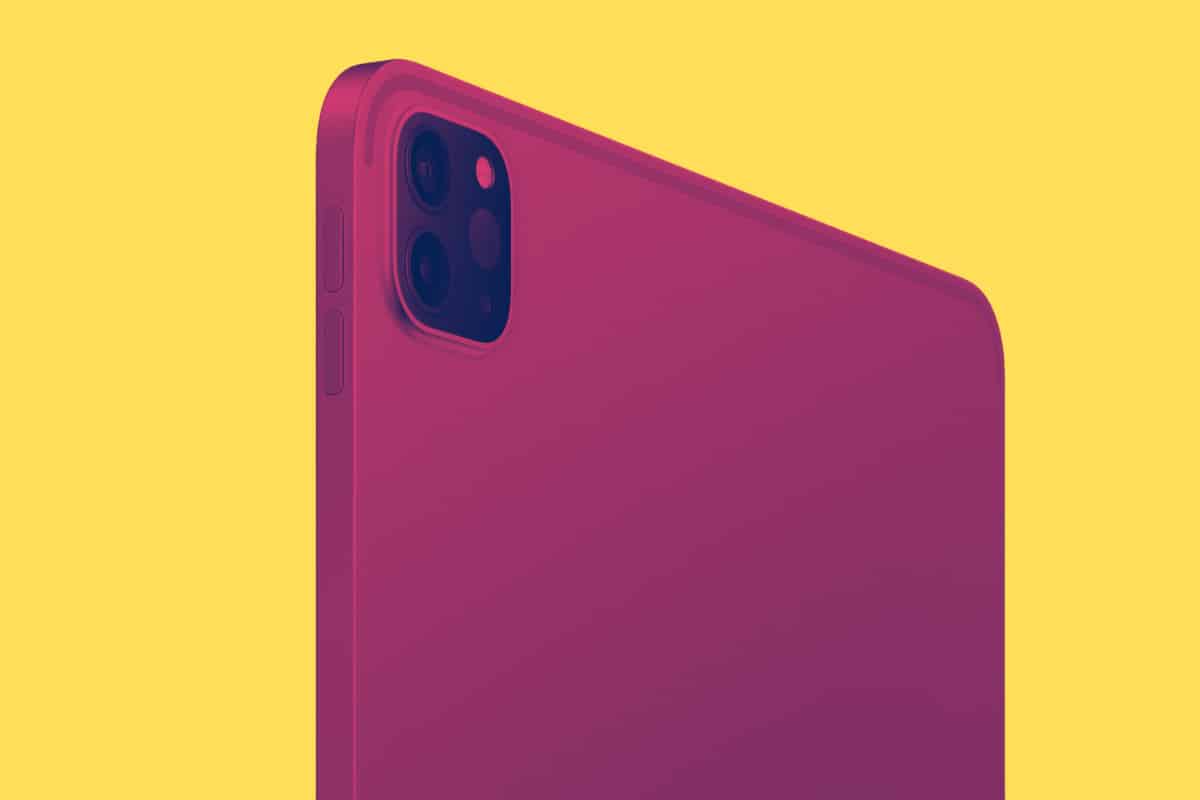
Not all iPads are created equal.
The best one for you depends on how you plan to use it—whether that’s for school, work, creativity, gaming, or just everyday browsing.
Some models offer top-tier performance and laptop-like productivity (Pro versions), while others focus on portability or affordability (Air, and Mini variants).
In this section, we’ll break down the best iPads for different types of users, so you can find the one that fits your lifestyle and budget.
Let’s get started!
📖 Best iPad for Students & Note-Taking
✅ Best Option: iPad Air (6th Gen) – Large screen, M2 chip, and Apple Pencil Pro support.
💰 Budget Alternative: iPad (10th Gen) – More affordable, still supports Apple Pencil.
🔎 Things to Consider: Apple Pencil responsiveness, battery life, keyboard case options.
🎨 Best iPad for Creative Professionals
✅ Best Option: iPad Pro (M4) – Fastest processor, best display, high storage capacity.
💰 Alternative: iPad Air (M2) – Still powerful enough for drawing & light editing.
🔎 Things to Consider: ProMotion (120Hz), Apple Pencil Pro features, external display support.
💼 Best iPad for Work & Productivity
✅ Best Option: iPad Pro (M4) – Laptop replacement, best multitasking features.
💰 Alternative: iPad Air (M2) – Cheaper but still supports Magic Keyboard.
🔎 Things to Consider: iPadOS 18 features, file management, battery life, accessory support.
🎮 Best iPad for Gaming
✅ Best Option: iPad Pro (M4) – Best refresh rate, highest performance.
💰 Alternative: iPad Mini (A17 Pro) – Small but powerful.
🔎 Things to Consider: Game performance, refresh rate, storage size.
📺 Best iPad for Media Consumption (Netflix, YouTube, Social Media)
✅ Best Option: iPad Air (M2) – Great display & battery life.
💰 Budget Alternative: iPad (10th Gen) – Large enough for streaming, affordable.
🔎 Things to Consider: Display size, sound quality, storage for offline viewing.
✈️ Best iPad for Portability
✅ Best Option: iPad Mini (7th Gen) – Small, lightweight, easy to carry.
🔎 Things to Consider: Screen size vs. usability, Apple Pencil support.
Key Factors to Consider When Buying an iPad in 2025
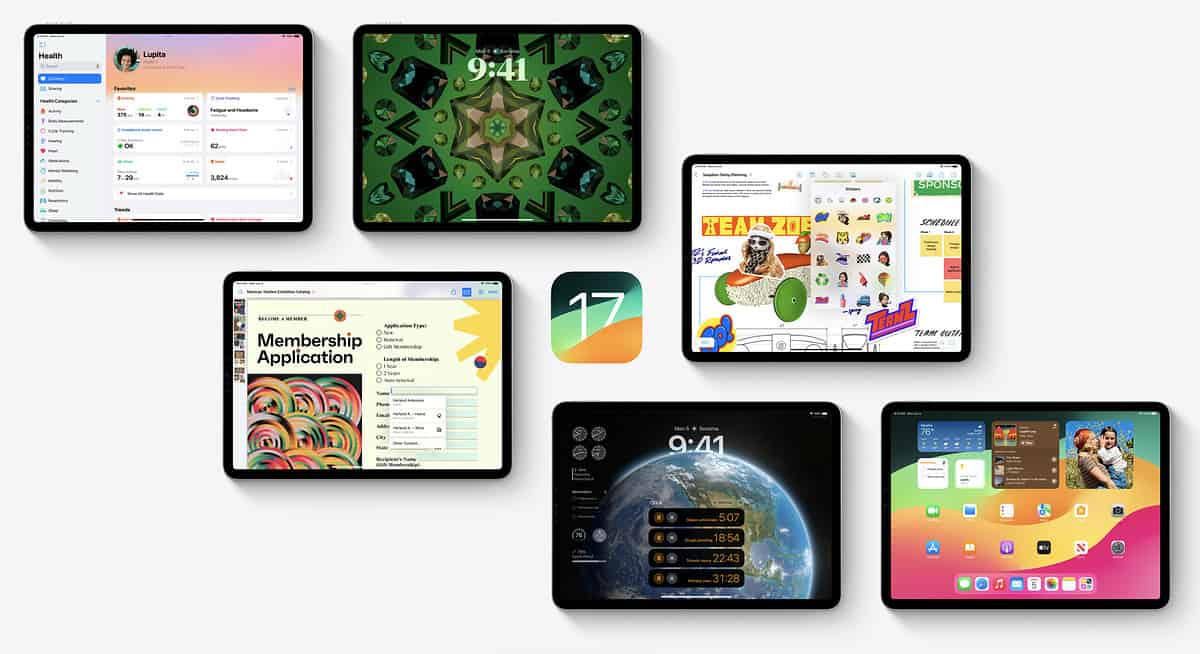
Before you buy, you need to think about more than just screen size and price.
Do you need a Pro-level chip for video editing? Is a high refresh rate display important for drawing or gaming? Will 128GB of storage be enough, or should you go bigger?
Let’s break down the key factors—performance, display, accessories, battery life, and more—so you can see how all the current models compare.
💰 Price & Value
- iPad Pro → Expensive but offers the best performance.
- iPad Air → Balances power and price, making it the best value for most users.
- iPad Mini → Ideal for those who need portability.
- iPad (10th Gen) → The best budget pick.
- Money-saving tips → Check out trade-in programs, student discounts, and refurbished deals.
With iPads, it’s not always the case that pay for what you get. But if you do want the most performance (laptop-grade stuff), a Pro model or the new Air is where it’s at.
For general users, sofa-users and casual web and app browsers, it’s more a case of budget (how much you want to spend) and size concerns.
The standard iPad model is just about perfect for anyone that just wants a large-screened tablet experience.
The mini, in my view, is just too small these days; it’s only marginally smaller than the iPhone 16 Pro Max.
If you want to save some cash on your next iPad, consider going with a refurbished model – anything from the last few years will be fine.
And, drum roll… they’re 40% cheaper!
⚡ Performance & Future-Proofing
- M4 (Pro models) → Most powerful, great for professional work.
- M2 (Air models) → Still fast, perfect for students & casual users.
- A17 Pro (Mini 7) → Solid performance, better battery life than A14.
- A14 Bionic (iPad 10th Gen) → Best for basic tasks, but may feel slow in a few years.
We covered most of this in the benchmarking section, but the long and short of it is this: The Pro and Air models are the most powerful, with the Pro leading the pack.
The Mini and Standard models are still potent, having more than enough power for absolutely everything most people do with tablets.
Go with a Pro or Air if you want to do more advanced tasks like photo and video editing and other graphically intensive tasks.
🖥️ Display & Size Considerations
- 120Hz ProMotion (iPad Pro) → Best for artists, gaming, smooth scrolling.
- Mini-LED (iPad Pro 12.9″) → Best contrast, HDR support.
- Regular Liquid Retina (Air, Mini, iPad 10th Gen) → Still great, but no high refresh rate.
Choosing the right iPad size depends on how you use it.
Bigger screens offer better productivity and entertainment, while smaller ones are easier to carry around.
Here’s a breakdown of the pros and cons of each:
| 📱 iPad Size Category | 🔍 Overview | ✅ Pros | ❌ Cons |
|---|---|---|---|
| Small & Compact (iPad Mini – 8.3″) |
📖 Best for reading, gaming, and portability. | Ultra-portable, easy to hold one-handed, great for note-taking. | Small screen can feel cramped for multitasking or creative work. |
| Mid-Sized (iPad, iPad Air – 10.9” / 11″) |
📚 Balanced size for work and play, great for students. | Good mix of portability and screen space, ideal for productivity. | No mini-LED or ProMotion (120Hz refresh rate), limiting high-end visuals. |
| Large & Pro-Level (iPad Pro – 11” / 12.9″, iPad Air – 13″) |
🎨 Designed for professionals, artists, and heavy multitasking. | More workspace, better display tech (mini-LED, ProMotion on Pro models). | Heavier, less portable, and more expensive. |
On mobile? Switch to landscape mode to view table more clearly
✍️ Apple Pencil
If you’re planning to take notes, sketch, or edit with an Apple Pencil, it’s important to know which iPads support which version.
Apple currently offers two Apple Pencil models, and compatibility varies by iPad.
🖊️ Apple Pencil Pro (Newest & Most Advanced)
- Compatible with:
- ✅ iPad Pro (M4, 7th Gen)
- ✅ iPad Air (M2, 6th Gen)
- Key Features:
- Pressure sensitivity & tilt support for drawing and writing
- Squeeze gesture for quick tool switching
- Haptic feedback for a more natural feel
- Find My support to track your lost Pencil
🖊️ Apple Pencil (1st Gen) – Basic & Budget-Friendly
- Compatible with:
- ✅ iPad Mini (7th Gen)
- ✅ iPad (10th Gen)
- Key Features:
- Works well for general note-taking and casual drawing
- No magnetic attachment—charges via Lightning to USB-C adapter (a bit clunky)
- No pressure sensitivity like the newer models
Which One Should You Get?
- If you’re an artist or creative professional, go for an iPad Pro or iPad Air with the Apple Pencil Pro—it’s the most responsive and feature-packed.
- If you need a basic stylus for notes or light sketching, an iPad Mini or iPad (10th Gen) with the 1st Gen Apple Pencil will get the job done at a lower cost.
💡 Pro Tip: If you’re investing in an Apple Pencil, consider a matte screen protector like Paperlike to improve the writing and drawing feel!
🔋 Battery Life & Charging Stats
| 📱 iPad Model | 🔋 Battery Life | 👤 Best For |
|---|---|---|
| iPad Pro (7th Gen) | 12 hrs (Wi-Fi) | ⚡ Power users – Ideal for demanding tasks like video editing & gaming. |
| iPad Air (6th Gen) | 10 hrs (Wi-Fi), 9 hrs (Cellular) | 🎓 Students – Great for note-taking, streaming, and light creative work. |
| iPad Mini (7th Gen) | ~10 hrs (Estimated) | ✈️ Travelers – Compact and lightweight, ideal for reading & media. |
| iPad (10th Gen) | 10 hrs (Wi-Fi) | ✅ Casual users – Perfect for web browsing, emails, and media. |
On mobile? Switch to landscape mode to view table more clearly
Battery life varies across iPad models, especially depending on how you use them.
While Apple advertises up to 10–12 hours for most models, real-world usage—like high-brightness settings, gaming, or video editing—can drain the battery faster.
⚡ USB-C Charging & Fast Charging Support
All 2024/5 iPads feature USB-C charging, making it easier to use a single charger across Apple and non-Apple devices.
- Fast Charging Support (Up to 30W+) → Available on iPad Pro (M4) and iPad Air (M2), allowing for faster top-ups with a higher-watt charger (not included).
- Standard USB-C Charging (~20W) → Used on iPad Mini (7th Gen) and iPad (10th Gen), still offering decent charging speeds.
- Pro Tip: If you want faster charging, upgrade to a 30W or 35W USB-C charger instead of the standard 20W one Apple includes in the box.
Which iPad Has the Best Battery Life?
- For all-day use with minimal charging interruptions: iPad Pro (M4) lasts the longest, but high-performance tasks will drain it faster.
- For reliable daily use without worrying about battery drain: iPad (10th Gen) and iPad Mini (7th Gen) are consistent performers.
- For power users who multitask frequently: iPad Air (6th Gen) is great but may need a midday charge under heavy use.
💡 Pro Tip: Using Low Power Mode and reducing screen brightness can help extend battery life, especially on Pro and Air models with higher refresh rates.
📷 Cameras & Face ID vs. Touch ID
- Face ID (Pro models) → Hands-free unlocking, great if you’re using it as a laptop replacement.
- Touch ID (Air, Mini, iPad 10th Gen) → Reliable, works even with masks.
- Front Camera Placement → Newer iPads have landscape front cameras for better video calls.
Apple has finally moved the front-facing camera to the landscape position on newer iPads, making FaceTime work more like they do on MacBooks and Mac computers.
No more awkward side-glances when you’re in a meeting or chatting with friends.
The Center Stage feature keeps you in the frame as you move, perfect for remote work, online classes, or even content creation.
Do You Want FACE ID or TouchID?
- Face ID (Pro models): Fast, hands-free unlocking—ideal if your iPad is docked or used as a laptop replacement.
Both options work well, but if you frequently use your iPad for work or creative tasks, Face ID will definitely make your life easier (I don’t think I could go back to TouchID, for instance).
🆕 iPadOS 18 & Software Features
- New AI features (Apple Intelligence) in iPadOS 18 → Exclusive to M4 & M2 iPads.
- Stage Manager & External Display Support → Only on Air & Pro models.
💾 Storage & Cloud Considerations
- 128GB minimum for most users.
- 256GB+ recommended for work, gaming, and creatives.
- iCloud or external SSDs can save money on storage.
📡 Wi-Fi vs. Cellular Models
- Wi-Fi models → Cheaper, best for home use.
- Cellular (5G) models → Useful for travel & work on the go.
- Hotspotting from an iPhone → A good alternative to Cellular models.
Final Thoughts: Which iPad Should You Buy?
The best iPad for you depends on what you need it for, but if you’re still unsure, here’s a quick recap to help you decide:
- ✅ Best Overall iPad (For Most Users) → iPad Air (6th Gen) – A perfect balance of power, price, and features. Great for students, professionals, and casual users alike.
- 💰 Best Budget iPad → iPad (10th Gen) – If you just need a reliable tablet for web browsing, streaming, and light productivity, this is the best value.
- 🎨 Best iPad for Artists & Pros → iPad Pro (M4) – The most powerful iPad with a stunning display and Apple Pencil Pro support, ideal for creatives and professionals.
- ✈️ Best Compact iPad → iPad Mini (7th Gen) – If portability is your top priority, the iPad Mini is small, lightweight, and powerful enough for most tasks.
- 💼 Best iPad for Productivity → iPad Pro (M4) – With Magic Keyboard support, Face ID, and a laptop-level M4 chip, this is the best choice if you want an iPad that can replace a computer.
Best iPad Alternatives in 2025
OK, we’ve covered a lot in this article but it wouldn’t be complete without a quick look at some of the best iPad alternatives available right now.
These Android tablets offer great performance, unique features, and better pricing in some cases.
So, before you pull the trigger on the iPad do yourself a favor and check these out first:
🔥 Best Android Tablet for Most Users: OnePlus Pad
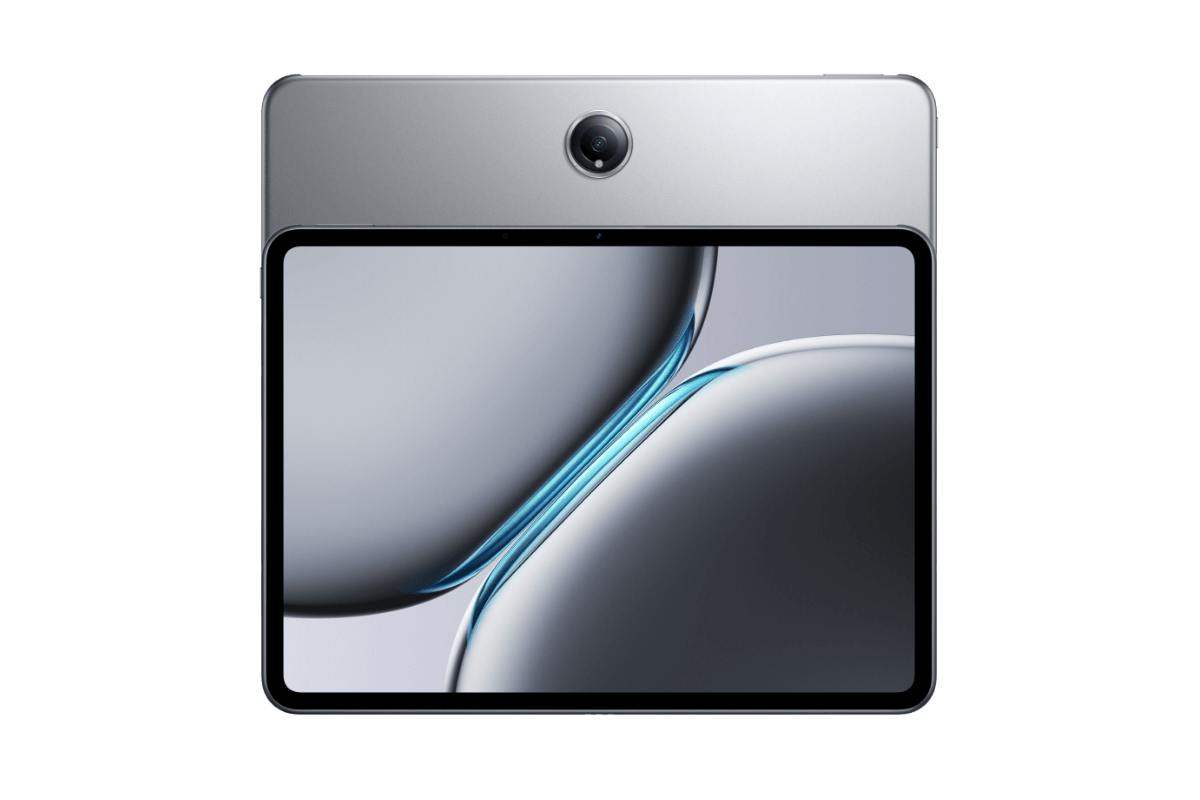
The OnePlus Pad delivers flagship-level performance at a fraction of the price of high-end tablets.
With a stunning 144Hz display, a powerful MediaTek Dimensity 9000 chip, and excellent battery life, it’s an Android tablet that punches well above its weight.
Whether for entertainment, gaming, or productivity, this is a top pick.
🔹 Pros: High refresh rate display, strong performance, competitive pricing
🔹 Cons: Limited app optimization compared to iPadOS
💎 Best Premium Android Tablet: Samsung Galaxy Tab S10 Plus
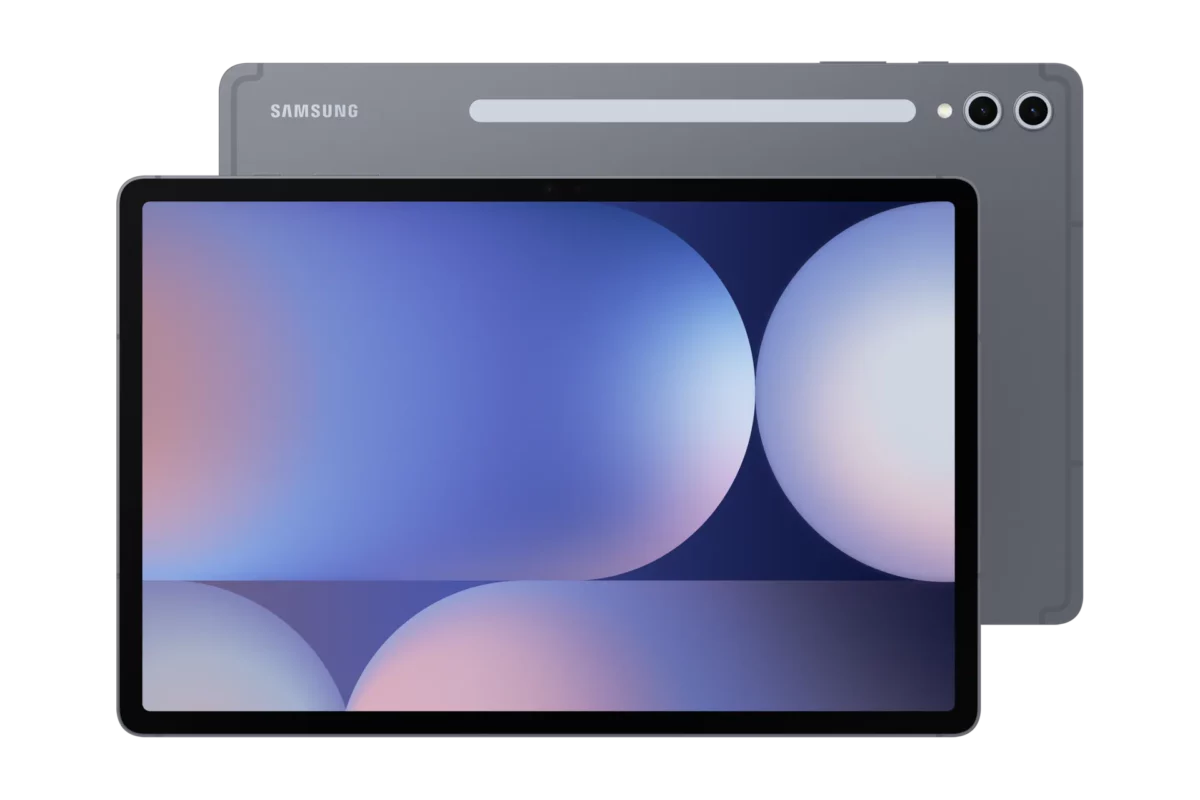
The Samsung Galaxy Tab S10 Plus is a powerhouse, combining a stunning AMOLED display, S Pen support, and excellent multitasking features.
It’s also one of the few water-resistant tablets, making it ideal for on-the-go users — or for safe use in the bath.
If you’re looking for an iPad Pro alternative with Android’s flexibility, this is it.
🔹 Pros: Best-in-class display, great for drawing and productivity, S Pen included
🔹 Cons: Pricey, Android tablet apps still lag behind iPadOS
💰 Best Affordable Tablet: Samsung Galaxy Tab S9 FE Plus
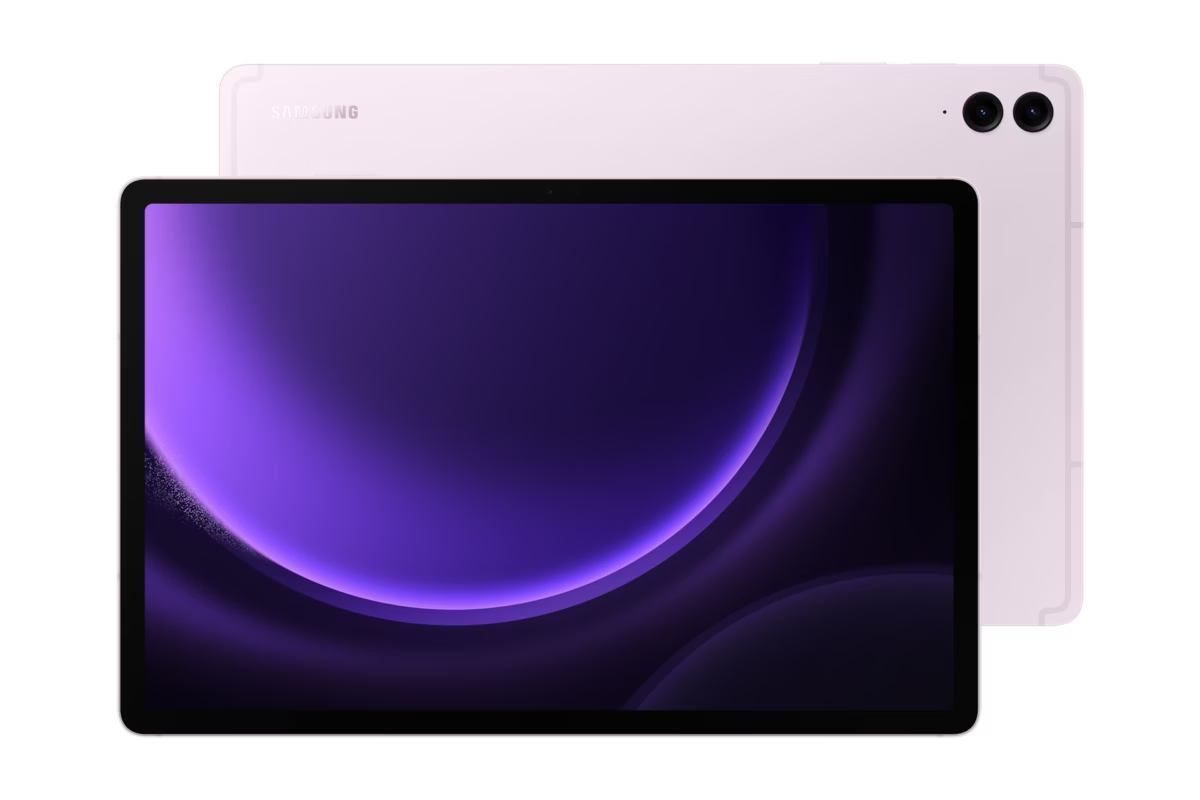
If you want a budget-friendly Android tablet without major compromises, the Galaxy Tab S9 FE Plus is a strong contender.
While it doesn’t have flagship-level power, it excels in battery life and features a durable, water-resistant design.
It’s perfect for travel, reading, or light productivity.
🔹 Pros: Excellent battery life, sturdy build, S Pen included
🔹 Cons: Mid-range performance, no AMOLED display
Going iPad? Here’s What To Do Next
If you’ve made up your mind, you can check out Apple’s iPad store to compare models and prices.
Looking for the best deals? Apple’s trade-in program and certified refurbished store can help you save money on your purchase.
Still unsure? Bookmark this guide or share it with a friend who’s also thinking about getting an iPad!
And if you want to stay up to date with the latest Apple news, subscribe to our newsletter—we’ll keep you in the loop on new iPad features, deals, and expert tips.
